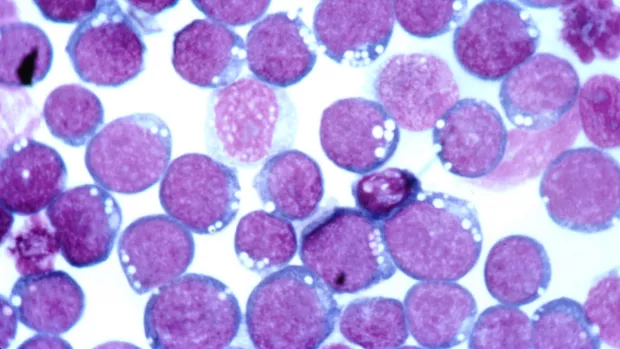
Under the microscope: What’s blood (flow) got to do with it?
Research has shown increasing the supply of blood and oxygen to nerves could help improve symptoms of MS and protect myelin. We go under the microscope to find out more.
All of your brain cells, including nerve cells, need energy to survive. Your brain uses about 20% of your body’s energy, even though it makes up just 2% of your body weight. Nerve cells can make this energy using oxygen and glucose (a type of sugar) from your blood. Your body makes sure blood is taken to the nerves so they can make the energy they need. But if they can’t make enough, they can’t send messages around the body as well.
Not enough energy
Researchers think this energy making process is disrupted in MS. When the immune system attacks myelin, the protective coating around nerves, it causes a chemical to be made. It tells blood vessels to get tighter, reducing blood flow. So nerve cells don’t get enough oxygen. This means they can’t make the energy they need. Nerves get tired, and slower at sending messages to each other. This is when you might see the symptoms of MS.
If this happens for a long time, the nerve cells can be permanently damaged. And it gets harder to repair their protective myelin coat. This build-up of damage could lead to permanent disability.
So we’re supporting early research into treatments that increase blood flow and oxygen supply to nerve cells. Researchers think this could eventually reduce severity of relapses and prevent permanent disability in progressive MS.
Getting enough oxygen
There are over 400 miles of blood vessels in the brain. Some of them, the arteries and veins, are very big, and others, the capillaries, are very small. This vast network of blood vessels means that blood can usually be delivered to every part of your brain.
When your brain cells need to make more energy, it tells blood vessels to open wider. More oxygen-containing blood can then be transported through the vessels to the brain cells. And they can make the energy they need to work properly or repair damaged myelin.
So researchers are looking at ways to tap into this process to help people with MS.
Reversing the shortage
Researchers at University College London tested a drug, called nimodipine to see if it could help rats with a condition similar to MS. It tells blood vessels to become wider, and let more blood with oxygen flow through them to help nerves make energy.
Daily doses of nimodipine could improve mobility in the rats, even when they stopped taking the drug. The rats given the drug also had less myelin loss. So it could allow nerves to keep talking to each other, and stop further myelin loss.
But nimodipine didn’t always work.
Overcoming swelling
Sometimes damaged parts of the brain and spinal cord become swollen, like when you sprain your ankle. The swelling can squash blood vessels, which could stop nimodipine from working as well.
So our researchers are now testing another drug called mannitol which reduces swelling, in combination with nimodipine. They’ll see if this could improve mobility in the rats by reducing swelling and increasing blood flow to nerves at the same time.
Read more about the project on restoring blood flow
What’s next?
Research so far has only been done in rats. But if the researchers find using nimodipine and mannitol together is effective, future clinical trials could test them together in people with MS.


